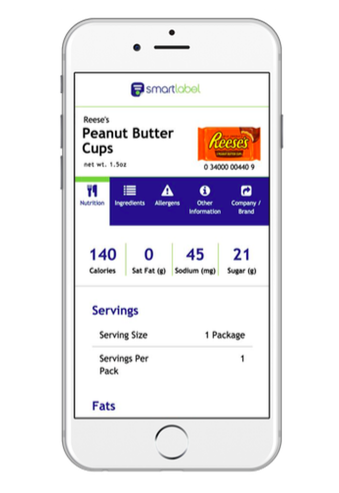TRUST – is huge when it comes to brand-consumer relationships and while it’s always been an important consideration, never before has it been this critical for product manufacturers to have the consumers trust. Research points out authenticity and having information on products that they can trust to make purchase decisions is one of the hallmark traits of the Millennial generation’s buying behavior. Considering, this generation is going to be the most influential for decades to come, the need to convey product related information more efficiently and more transparently is a pressing need for most brands globally.
Let’s put aside whether a purchase is made online, offline, at a store or on a website or mobile app. While buying food, more consumers are looking to see if the brand has a GMO declaration on the item. While buying a motorcycle helmet, they want to know if it meets DOT, Snell or ECE 22.05 standards. They look for Fair-Trade, Sustainable, Socially Responsible, Child Safe and other certifications. They demand a lot more information, a lot more transparency and the information influences a lot more decisions than previous generations of consumers. Also considering, this is the smartphone generation we’re talking about where instant mobile accessible information is everything, the SmartLabel initiative is perhaps the best solution we’ve seen materialize to address this pressing need to build more trust between brands and consumers.
Traditionally, when consumers had only the product packaging label & the contents of the packaging to get information and details on the product, things were simpler. However, there are now several ways to get information on products as well as several channels through which they can be bought making it confusing for consumers on what to trust. The product details you find printed on the label may be different from what you find in an online search, a review website, an e-commerce site description or another source. There’s a lot of information accessible when you need it but how do you know what part of it is accurate, authentic or reliable? While many stakeholders have been individually trying to address the problem, there haven’t been many solutions that take a step back and look at the issue from an all-inclusive perspective considering everyone involved. Up until now… that is.
SmartLabel
What started off as CITI the Consumer Information Transparency Initiative with the Grocery Manufacturers Association (GMA) and the Food Marketing Institute (FMI) in 2014 has gathered momentum with representatives of some of the largest players in the CPG industry as well as top consulting firm minds coming together to chalk out a response. The result – a detailed spec for SmartLabel, a universal design which will be recognizable, consistent across all products and brands, instantly accessible extended digital label that can be used by consumers to pull up information on a product that they can be assured ..is brand sanctioned information.
The SmartLabel solution comes across well thought out with a holistic view and is something we see with the potential to improve the way brands deliver information about their products and make it accessible to consumers. Unlike individual efforts to improve transparency, by including most of the large CPG companies, it has the potential to become a standard format to deliver this information which can be universally recognized by consumers the way we recognize certifications, trust marks, and standards while being able to go beyond physical labels and be accessible digitally as well.
While at QLIKTAG we’re already busy working away to implement the SmartLabel specifications into our Q*Engine extended merchandising platform in order to make it easier for brands to deploy for their products, there is a lot more to this great initiative which we’ll uncover and discuss in upcoming posts. Stay tuned!




